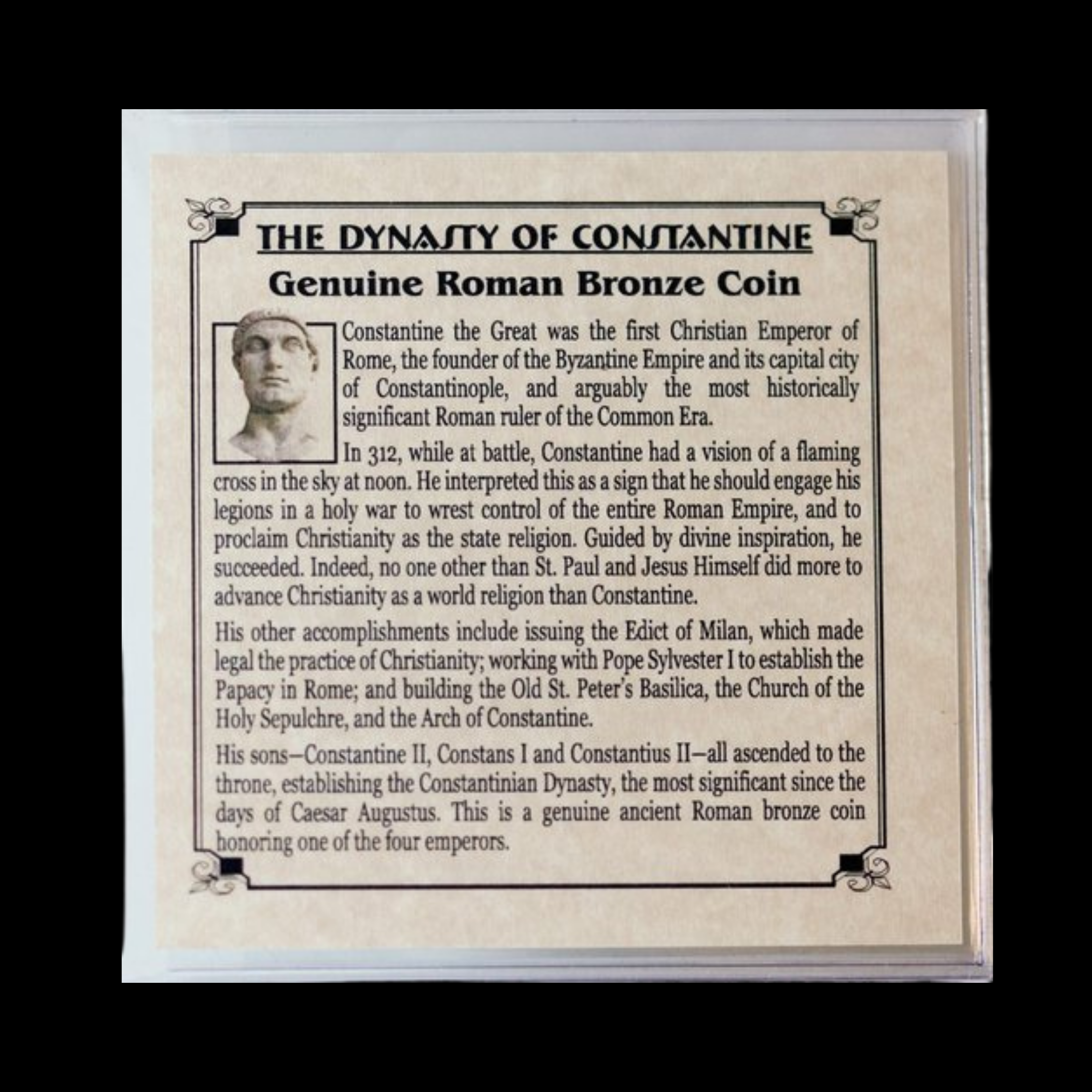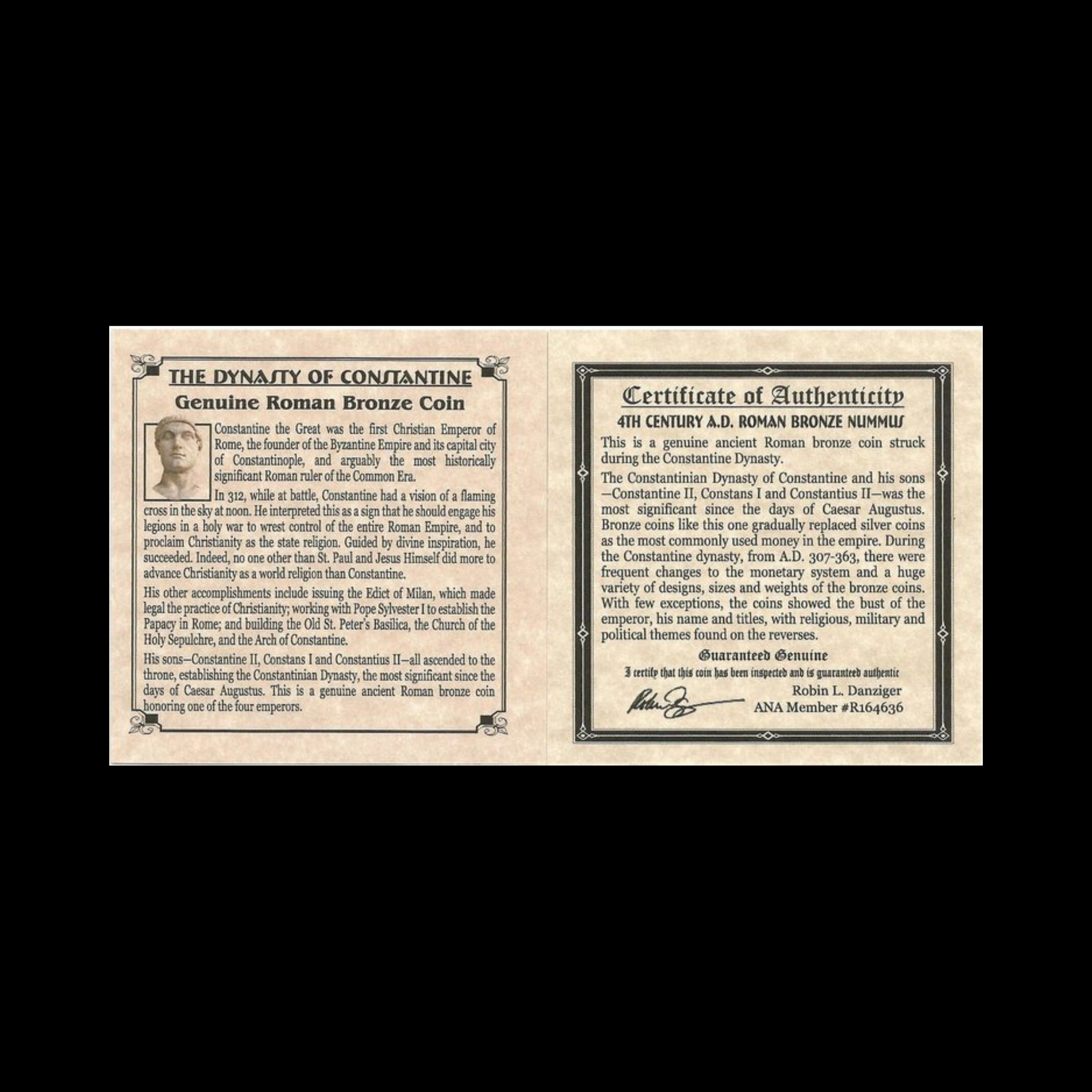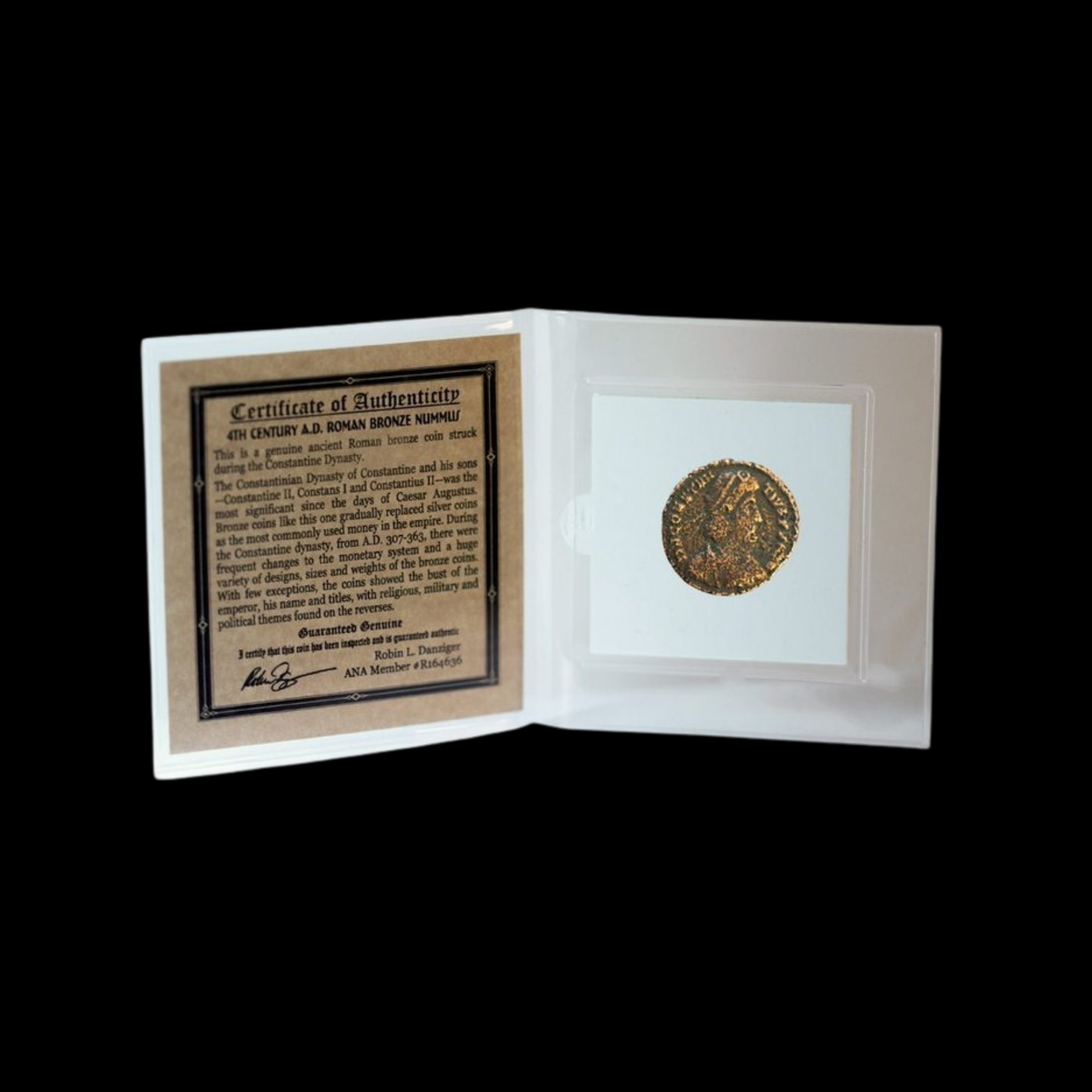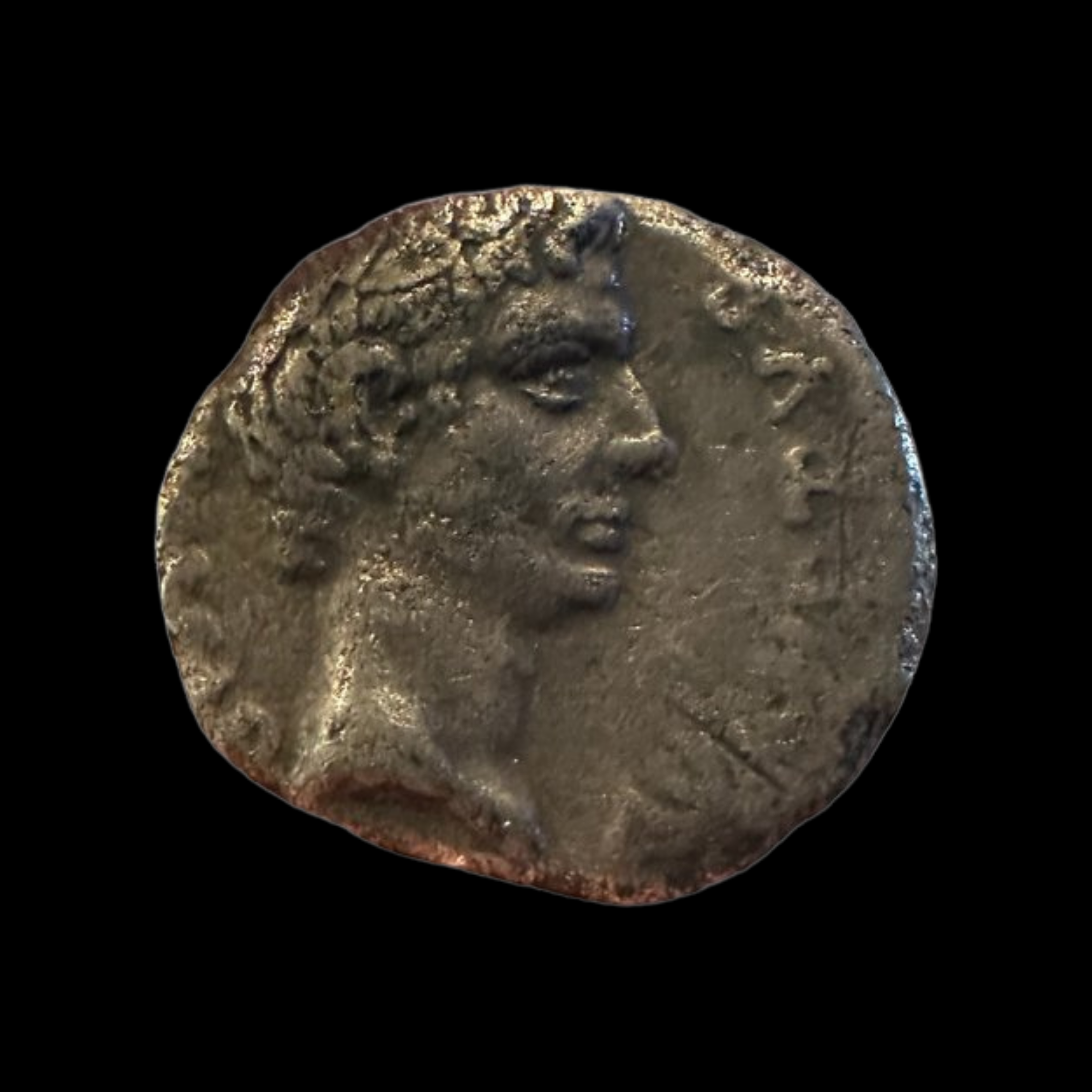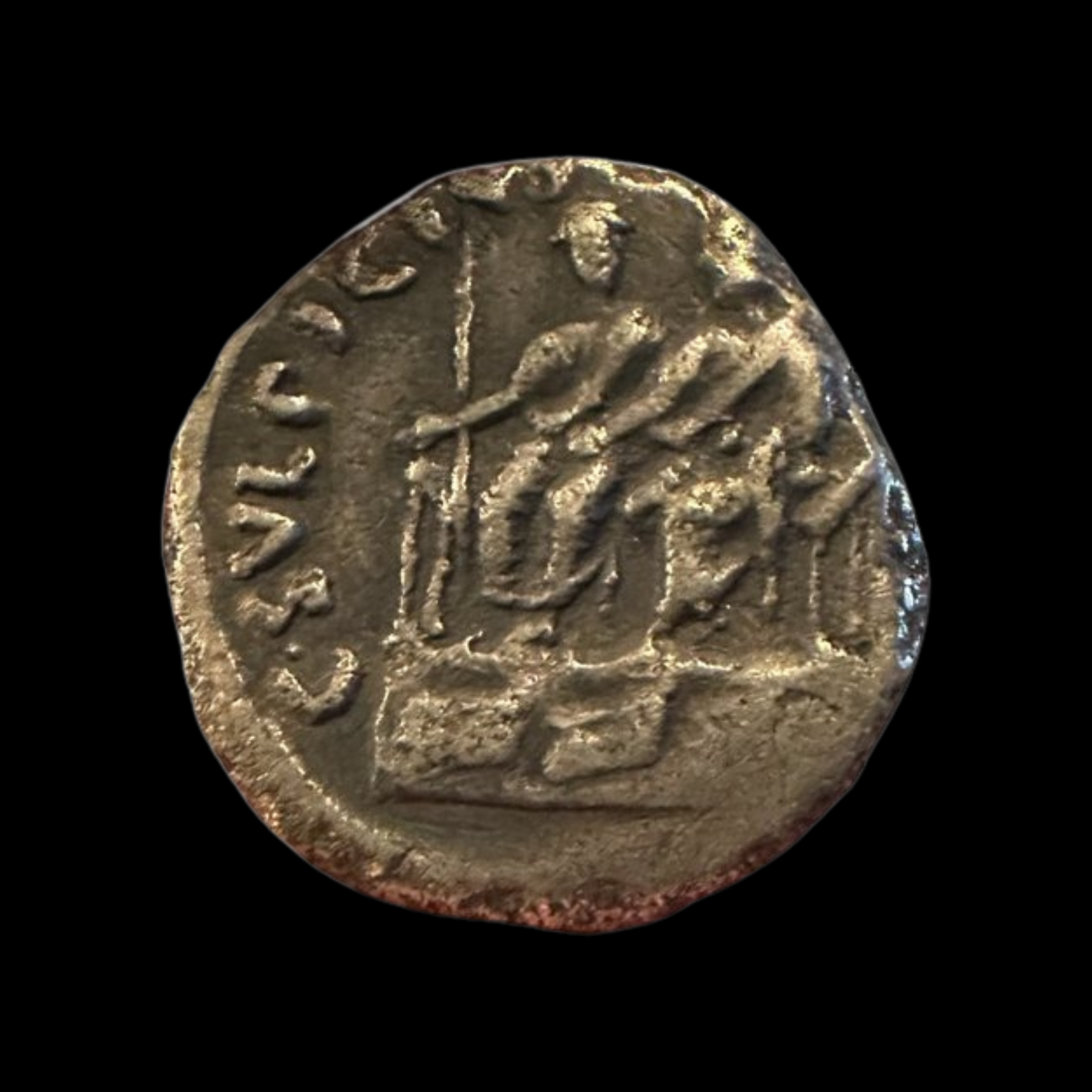 Image 1 of 14
Image 1 of 14

 Image 2 of 14
Image 2 of 14

 Image 3 of 14
Image 3 of 14

 Image 4 of 14
Image 4 of 14

 Image 5 of 14
Image 5 of 14

 Image 6 of 14
Image 6 of 14

 Image 7 of 14
Image 7 of 14

 Image 8 of 14
Image 8 of 14

 Image 9 of 14
Image 9 of 14

 Image 10 of 14
Image 10 of 14

 Image 11 of 14
Image 11 of 14

 Image 12 of 14
Image 12 of 14

 Image 13 of 14
Image 13 of 14

 Image 14 of 14
Image 14 of 14















Roman Bronze Coin of Emperor Licinius I (about 1,700-1,720 years ago)
This bronze coin was minted during the reign of Licinius I, who ruled as co-emperor during the late Roman period alongside Constantine the Great. As an emperor of the eastern provinces, Licinius played a crucial role in the political and religious transformations that occurred during this pivotal era when the Roman Empire was transitioning toward Christianity while still maintaining many traditional Roman practices.
Coin Description:
Front side: Portrait of Emperor Licinius I facing right, typically wearing either a laurel wreath or radiate crown, with Latin inscription giving his name and imperial titles
Back side: Common motifs include Roman deities, military symbols, or personifications of virtues like Victory or Providence, accompanied by Latin legends
Technical Details:
Bronze composition (AE = aes, bronze in numismatic terminology)
Denomination: Likely a follis or reduced follis (standard bronze denomination of this period)
NGC certified (Numismatic Guaranty Corporation)
Minted between 308-324 AD
Condition as certified by NGC
Historical Significance: Licinius emerged as a major political figure during the complex power struggles following the collapse of the Tetrarchy system. As Constantine's ally and brother-in-law through his marriage to Constantia, Licinius co-authorized the famous Edict of Milan in 313 AD, which granted religious tolerance to Christians throughout the empire. Despite this momentous collaboration, the relationship between the two emperors deteriorated into open hostility. After years of uneasy co-rule and several military conflicts, Constantine finally defeated Licinius at the Battle of Chrysopolis (near modern Istanbul, Turkey) in 324 AD. Though initially spared and exiled, Licinius was ultimately executed on Constantine's orders, consolidating all imperial power under Constantine alone.
This bronze coin was minted during the reign of Licinius I, who ruled as co-emperor during the late Roman period alongside Constantine the Great. As an emperor of the eastern provinces, Licinius played a crucial role in the political and religious transformations that occurred during this pivotal era when the Roman Empire was transitioning toward Christianity while still maintaining many traditional Roman practices.
Coin Description:
Front side: Portrait of Emperor Licinius I facing right, typically wearing either a laurel wreath or radiate crown, with Latin inscription giving his name and imperial titles
Back side: Common motifs include Roman deities, military symbols, or personifications of virtues like Victory or Providence, accompanied by Latin legends
Technical Details:
Bronze composition (AE = aes, bronze in numismatic terminology)
Denomination: Likely a follis or reduced follis (standard bronze denomination of this period)
NGC certified (Numismatic Guaranty Corporation)
Minted between 308-324 AD
Condition as certified by NGC
Historical Significance: Licinius emerged as a major political figure during the complex power struggles following the collapse of the Tetrarchy system. As Constantine's ally and brother-in-law through his marriage to Constantia, Licinius co-authorized the famous Edict of Milan in 313 AD, which granted religious tolerance to Christians throughout the empire. Despite this momentous collaboration, the relationship between the two emperors deteriorated into open hostility. After years of uneasy co-rule and several military conflicts, Constantine finally defeated Licinius at the Battle of Chrysopolis (near modern Istanbul, Turkey) in 324 AD. Though initially spared and exiled, Licinius was ultimately executed on Constantine's orders, consolidating all imperial power under Constantine alone.
This bronze coin was minted during the reign of Licinius I, who ruled as co-emperor during the late Roman period alongside Constantine the Great. As an emperor of the eastern provinces, Licinius played a crucial role in the political and religious transformations that occurred during this pivotal era when the Roman Empire was transitioning toward Christianity while still maintaining many traditional Roman practices.
Coin Description:
Front side: Portrait of Emperor Licinius I facing right, typically wearing either a laurel wreath or radiate crown, with Latin inscription giving his name and imperial titles
Back side: Common motifs include Roman deities, military symbols, or personifications of virtues like Victory or Providence, accompanied by Latin legends
Technical Details:
Bronze composition (AE = aes, bronze in numismatic terminology)
Denomination: Likely a follis or reduced follis (standard bronze denomination of this period)
NGC certified (Numismatic Guaranty Corporation)
Minted between 308-324 AD
Condition as certified by NGC
Historical Significance: Licinius emerged as a major political figure during the complex power struggles following the collapse of the Tetrarchy system. As Constantine's ally and brother-in-law through his marriage to Constantia, Licinius co-authorized the famous Edict of Milan in 313 AD, which granted religious tolerance to Christians throughout the empire. Despite this momentous collaboration, the relationship between the two emperors deteriorated into open hostility. After years of uneasy co-rule and several military conflicts, Constantine finally defeated Licinius at the Battle of Chrysopolis (near modern Istanbul, Turkey) in 324 AD. Though initially spared and exiled, Licinius was ultimately executed on Constantine's orders, consolidating all imperial power under Constantine alone.
Valerius Licinianus Licinius (Greek: Λικίνιος; c. 265 – 325) was Roman emperor from 308 to 324. For most of his reign, he was the colleague and rival of Constantine I, with whom he co-authored the Edict of Milan that granted official toleration to Christians in the Roman Empire. He was finally defeated at the Battle of Chrysopolis (AD 324), and was later executed on the orders of Constantine I.
Born to a Dacian[3][4] peasant family in Moesia Superior, Licinius accompanied his close childhood friend and future emperor Galerius, on the Persian expedition in 298.[3] He was trusted enough by Galerius that in 307 he was sent as an envoy to Italy, to attempt to reach some sort of agreement with the usurper Maxentius.[3] When Galerius went to deal with Maxentius personally after the death of Severus II, he left the eastern provinces in Licinius' care.[5]



